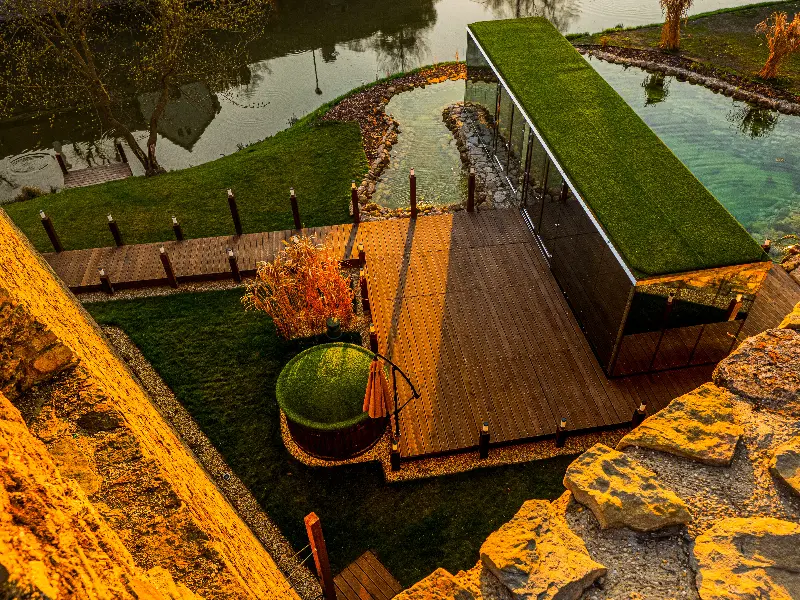
Helyszín címkék:
In search of storytelling castles in Győr-Moson-Sopron County
Hype&Hyper
The region, of strategic importance since the great Hungarian conquest, has always been the meeting point of East and West for the Hungarians: as a buffer zone on the border of the independent Hungarian kingdom, it protected the country from attacks from the West and from those from the East. The system of outlying castles was transformed by the time of the Turkish occupation, until the Habsburgs, following the Rákóczi War of Independence in the early 18th century, destroyed many of the region’s fortresses and turned the remaining ones into castles, anticipating a succession of resistance. Castles that are still the most developed region after the capital, telling time capsules of bygone eras, where Hungary’s noble families made not only domestic but also European history, politically, militarily and culturally.
In the footsteps of famous Hungarian families
Esterházy Castle in Fertőd
The Western Transdanubian region is rich in natural attractions and historical heritage, and cultural events and leisure activities are an integral part of everyday life. Whatever the time of year when we arrive, it is worth spending (at least) half a day at the Esterházy family’s famous residence, the most important representative of Baroque-Rococo architecture in Hungary. Converted from a former hunting castle in Sarród upon the order of Miklós Esterházy (nicknamed “The Shining” by his contemporaries) into a stately home by 1766, the 126-room monumental complex is a worthy match for the castles of Schönbrunn and Versailles. The completed castle then hosted sumptuous ceremonies on a daily basis, comparable to those of a royal court.
His days spent here also inspired the young Goethe, who called what he saw “Esterházy’s fairy kingdom”.

Besides the high-ranking families and officials of the period, Maria Theresa herself also visited Eszterháza. Prince Nicholas made this splendour memorable: using all the tools of the Baroque-Rococo style, he created his own theatrical performances, an opera house, a ballet, a puppet theatre, and his famous orchestra of European fame was led by Joseph Haydn himself as the family’s composer and conductor. The castle complex, which today houses a contemporary history exhibition, is still a major classical music venue. Its story is an adventurous one, as it has lived a lot: After the death of Prince Nicholas, the family moved back to Kismarton, and the little-used Eszterháza estate faded, and for a while it went dormant. After the Second World War, it was used as a Soviet military hospital until 1957, when restoration work began in a dignified manner. If you have been here, you won’t forget its vast, storytelling spaces and imposing French garden, and if you haven’t, it’s time to be part of the former fairy world!

Széchenyi Castle in Nagycenk
Besides the Esterházy Family, the Széchenyi Family also left their mark on the area. Not far from Fertőd, the late Baroque neoclassical Széchenyi residence in Nagycenk, one of the most famous castles in the region, is a national pilgrimage site for Hungarians. Ferenc Széchenyi (István Széchenyi’s father) was already a significant figure in the life of the family, as he made the estate the family’s permanent residence. In the castle, originally built in the Baroque style, he housed his valuable art collection and library of tens of thousands of items, which he finally donated to the Hungarian nation in 1802, thus becoming the founder of the Hungarian National Museum and indirectly the National Széchenyi Library.

The young Count István, returning home after his military service, drew from his experiences abroad and modernised the estate he had taken over from his father, creating a model farm according to his own needs. He had technical achievements – learned about during his travels – built into the castle: a bathroom, a flushing toilet, gas lighting, which was admired by such illustrious people as the Parliamentary Embassy, Ferenc Deák, Baron József Eötvös, Gábor Klauzál and many others. The former home of the “greatest Hungarian” was not spared in the Second World War either, before the reconstruction almost only the walls were left standing, and in the summer of 1945, the people staying here threw out and burned everything. In 1973, the Memorial Museum of the family and the life of István Széchenyi was opened in the Nagycenk castle with its beautiful English garden. To this day, the park is home to rare species of trees from four continents, surrounded by huge plane trees that are hundreds of years old. (If you are travelling with children, don’'t miss the Széchenyi Museum Railway and its Locomotive Skanzen in Nagycenk after the castle! A real experience, a great time travel for little explorers, as well.)
Useful tip: Other Széchenyi manor houses can be found in the county, too; heading for the following settlements: Fertőszéplak, Iván, Rábasebes and Sopronhorpács.

On romantic tours
The once glittering castles of Győr-Moson-Sopron County are now home to social homes and schools. Although they cannot be visited as museums in terms of their function, it is still worth a visit to the neo-Renaissance, historicised Barthodeiszky Castle, a characteristic building on Beled’s main street with its local history collection, and the stunningly beautiful Cziráky Castle and its ancient wooded park in Dénesfa. The former mansion of the Cziráky Family has been used as a rehabilitation ward since the 1950’s.

(Our other tipps:
Bishop' palace, Fertőrákos
Festetics-Batthyány Castle, Egyed
Batthyány Castle, Dunakiliti
Khuen-Héderváry Castle, Hédervár)




